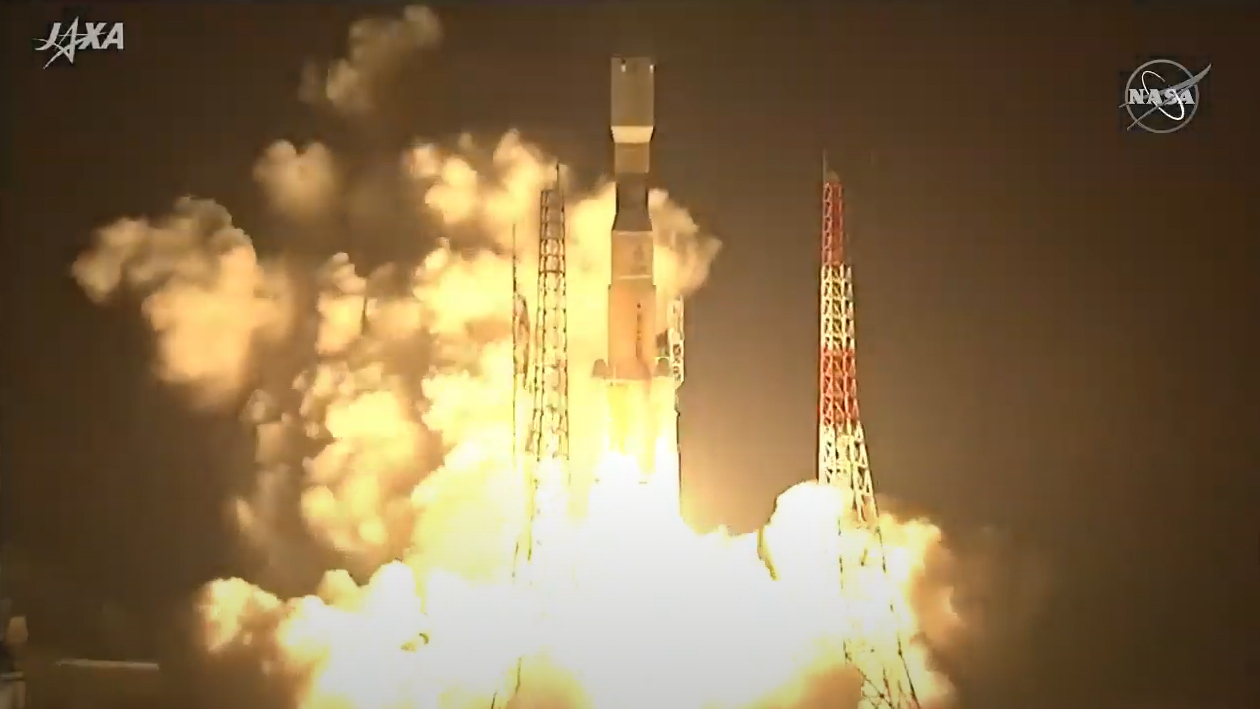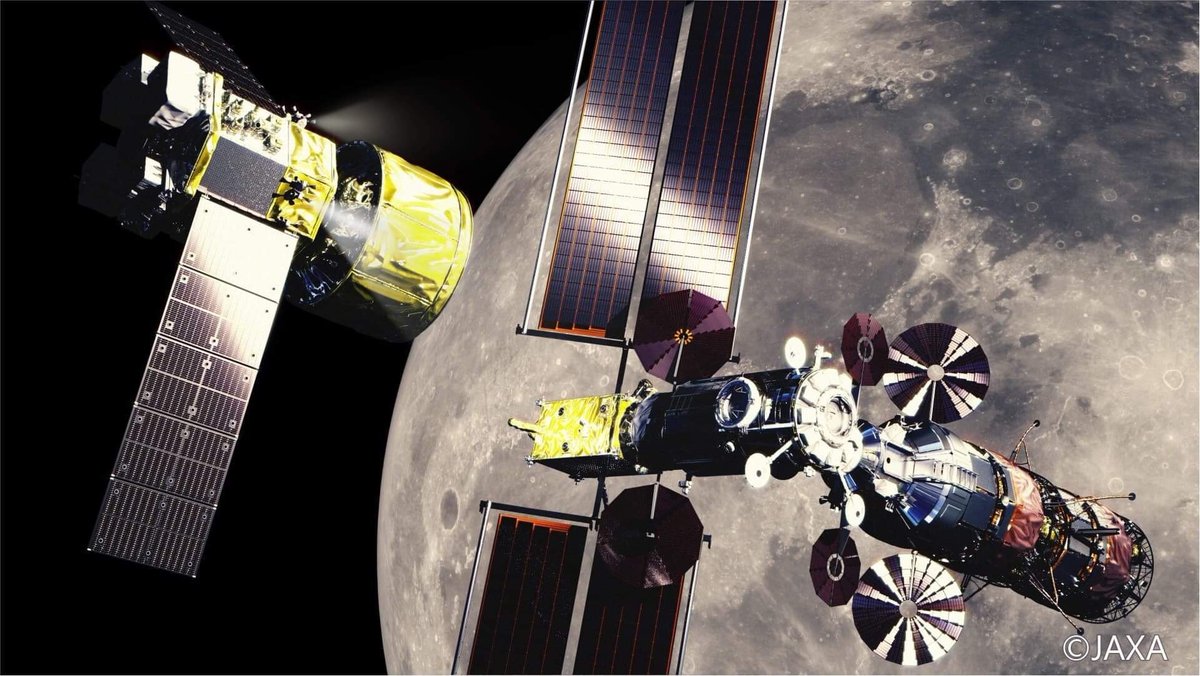Japanese HTV cargo ship, the last of its kind, launches to International Space Station
It will reach the station Monday, May 25.
An unpiloted Japanese cargo ship, the last of its kind, launched toward the International Space Station today (May 20), kicking off a final voyage for the Japan Aerospace Exploration Agency (JAXA).
The supply ship, called HTV-9, lifted off atop a Mitsubishi Heavy Industries H-IIB rocket from Japan's Tanegashima Space Center at 1:31 p.m. EDT (1731 GMT). The local time at launch was 2:31 a.m. JST at the space center.
The rocket was bathed in a blue light before launch to honor healthcare workers around the world who are battling the ongoing coronavirus pandemic.
"A flawless launch and a flawless climb to orbit for the final HTV vehicle, now well on its way to the International Space Station," NASA spokesperson Rob Navias said during live commentary.
Related: How Japan's HTV cargo ships work (infographic)
The mission marks the final flight of JAXA's HTV spacecraft and its H-IIB rocket as the country pursues a new booster, the H-III rocket, and an advanced HTV-X spacecraft for future missions beginning in 2022.
HTV-9 is carrying more than 8,000 lbs. (3,600 kilograms) of supplies for the three Expedition 63 astronauts currently living on the International Space Station. That haul includes six new lithium-ion batteries for the station's solar arrays, which will be installed later this year in a series of spacewalks.
Breaking space news, the latest updates on rocket launches, skywatching events and more!
The spacecraft is also carrying water, food, spare parts and science gear for the station, including a new Confocal Space Microscope to study biological samples in space; a Solid Combustion Experiment Module for fire experiments; and a binocular telescope called iSIM that will provide ultra-high-resolution views of Earth from the porch-like External Facility outside Japan's Kibo laboratory on the station.
JAXA officials said the spacecraft is also carrying the "world's first space avatar," a robot controlled from the ground that will allow users to "see, hear, feel and interact freely" with the space station's environment. The robot is part of a commercial partnership with ANA Holdings in Japan, JAXA officials said in a project description.
Related: Japan's robotic space cargo ship fleet in photos
Japan's HTV spacecraft are disposable space freighters designed to haul up to 6 tons (5.4 metric tons) of supplies to the International Space Station. The cylindrical craft are 33 feet (10 meters) long and 14 feet (4.4 m) wide, and cannot dock themselves to the station. Instead, they are captured by the station's robotic arm.
The first HTV spacecraft launched in September 2009. Since then, JAXA has launched eight more missions while continuing to develop new technologies for its successor, the HTV-X.
HTV-9 will test a new wireless communications system on this flight that the HTV-X will use to dock itself to the station. HTV-X will also feature a new, reusable pressurized compartment. In 2018, the HTV-7 spacecraft successfully tested a small reentry capsule that returned experiments to Earth, although JAXA's HTV vehicles themselves burn up in Earth's atmosphere as they fall back to Earth.
Last year, JAXA and NASA agreed to work together on future moon missions. As part of that collaboration, JAXA may use HTV-X to deliver cargo to NASA's planned Gateway station around the moon.
JAXA's HTV vehicles are part of an international fleet of robotic spacecraft that have regularly resupplied the space station over the years. Russia's workhorse Progress cargo ships, the European Space Agency's Automated Transfer Vehicles and private U.S.-built cargo ships built by SpaceX and Northrop Grumman round out that group.
- Space Station's Robotic Cargo Ship Fleet (A Photo Guide)
- NASA, Japan Consider Joint Crewed Moon Missions
- JAXA: Japan's Aerospace Exploration Agency
Email Tariq Malik at tmalik@space.com or follow him @tariqjmalik. Follow us @Spacedotcom, Facebook and Instagram.
OFFER: Save 45% on 'All About Space' 'How it Works' and 'All About History'!
For a limited time, you can take out a digital subscription to any of our best-selling science magazines for just $2.38 per month, or 45% off the standard price for the first three months.

Tariq is the award-winning Editor-in-Chief of Space.com and joined the team in 2001. He covers human spaceflight, as well as skywatching and entertainment. He became Space.com's Editor-in-Chief in 2019. Before joining Space.com, Tariq was a staff reporter for The Los Angeles Times covering education and city beats in La Habra, Fullerton and Huntington Beach. He's a recipient of the 2022 Harry Kolcum Award for excellence in space reporting and the 2025 Space Pioneer Award from the National Space Society. He is an Eagle Scout and Space Camp alum with journalism degrees from the USC and NYU. You can find Tariq at Space.com and as the co-host to the This Week In Space podcast on the TWiT network. To see his latest project, you can follow Tariq on Twitter @tariqjmalik.




